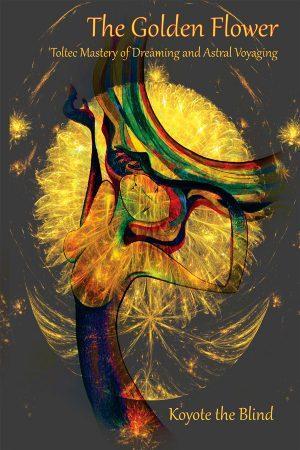Koyote the Blind
“I am a talker, an hablador. I did not always know this. When I was born, my tongue was fused to the roof of my mouth, and it had to be cut. For a long time I could not roll the r’s in my given name. Like Demosthenes, I had to learn to speak clearly by reciting poems with stones in my mouth. The name “Koyote” describes some features of my spirit and how it expresses itself onto the world. The coyote as an archetype is a trickster, a heyoka spirit who uses hidden doors and back alleys of reality. In the popular consciousness of Latin America, he is a sly criminal who smuggles people across the border. In my case, I bring people across borders of consciousness by utilizing the back alleys of perception. I subvert the rules, navigating spaces not many dare. The trickster aspect of coyote applies as well. Sometimes creator, sometimes destroyer, I am always a buffoon… a Fool. The coyote spirit doesn’t allow for stability and yet sometimes in moments of chaos he brings something that gives stability.
I am an hablador and my art is the Telling. The Telling is an art of immediacy. The experience is direct and in the moment and is not mediated. It’s experiential. There are no scripts, no agenda, no indoctrination! This is the sound that MAKES. Where a traditional storyteller leaves a moral, I, the hablador, deconstruct cultural icons. I don’t worry about entertaining. I am not concerned about whether the story delights or offends. I only aim to bring something through from another world.
Each time I perform a Telling, I step into the rivers of primordial chaos and reform the world. My predecessors are the locos (the crazy vagabonds) who once traveled Latin American towns pretending to be crazy drunks. They told absurd tales of magic and mystery to the children. Like them, I draw from the psychic and energetic content of the people present. I weave–using words, mudras (precise gestures), magical passes, and the movements of my shadows–a tapestry of multiple dimensions. The listener is no longer passive; they become part of the terrain. They are now going through what I describe. In the end, it is common to hear them say, “He was talking about me.”
I developed the art of the Telling inspired by what I’ve received from my lineage, which starts among Toltec masters in tenth-century Mexico and whose art was preserved throughout Latin America by drifters who told crazy stories to the children. In a way, it might have started as a way of connecting back to my roots in El Salvador, before I went into exile because my “subversive” acts of teaching war refugees to read and write put my life in danger. The sense of magick, eternal mystery, pervades every layer of my memories from that place before and through the war, and many stories clamor to come out and play in the light of this space created by words and attention.
I have developed the Telling into a form that provokes in the audience uncommon emotions, strange cognitions, and ways of seeing the self that are not easily defined. Having studied philosophy at the graduate level, I approach this art of The Telling in the spirit of the ancient philosophical tradition, disarming the mind and the personality in such a way as to release the being from the domination of habitual thought.
I attempt, in my writings, to apply the art of the Telling to the written page.”
Showing the single result

